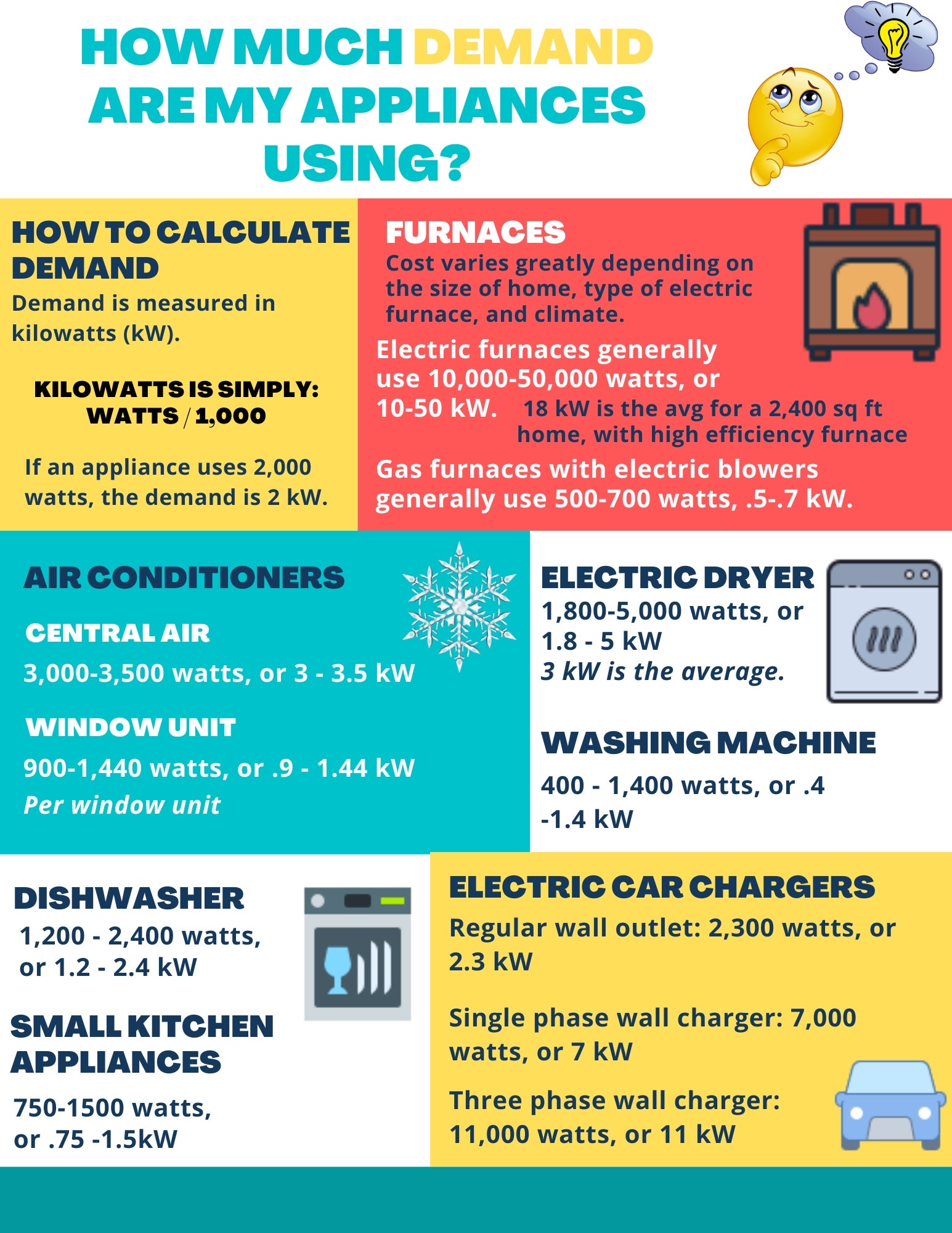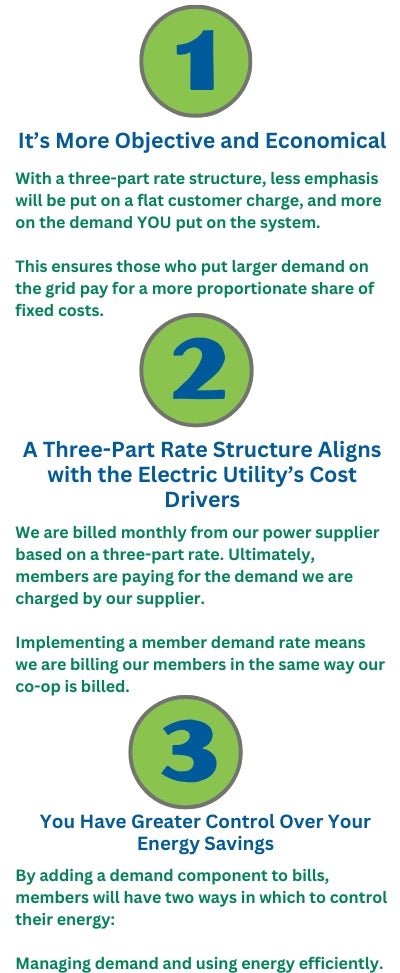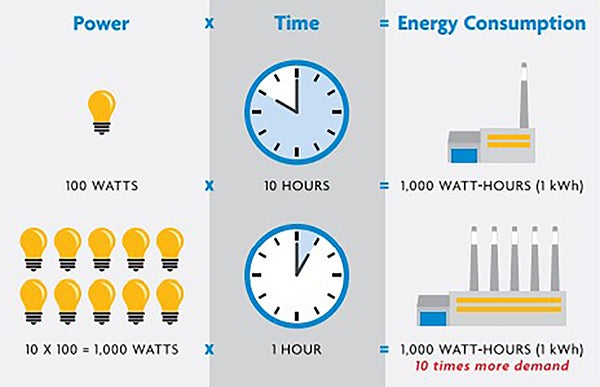
Understanding Demand and Consumption
The difference between demand and consumption is vital to your choices in reducing your energy costs. A simple way to see the differnce between demand and consumption is by considering two examples.
One 100-watt lightbulb burning for 10 hours consumes 1,000 watt-hours or 1 kWh. The entire time it is on, it requires or "demands" 100 watts or 0.1 kW from the utility. That means the utility must have that 0.1 kW ready whenever the customer turns the lamp on.
Similarly, 10 100-watt lightbulbs burning for 1 hour consumes 1,000 watt-hours or 1 kWh. Note that in both examples, the consumptin is 1 kWh. However, look how differently the second situation impacts the utility from a demand perspective. The utility must now be prepared to provide 10 times as much capacity in response to the "demand" of the 10 lightbulbs operating at once.
If both of these customers are billed for their consumption only, both will get the same bill for 1 kWh of energy, which is the way most residential customers are billed. But the requirement for the utility to meet this energy requirements is very different. In teh second case, the utility has to have 10 times more generating capactity to provide the second customer's brief high demand for power compared to the first case.
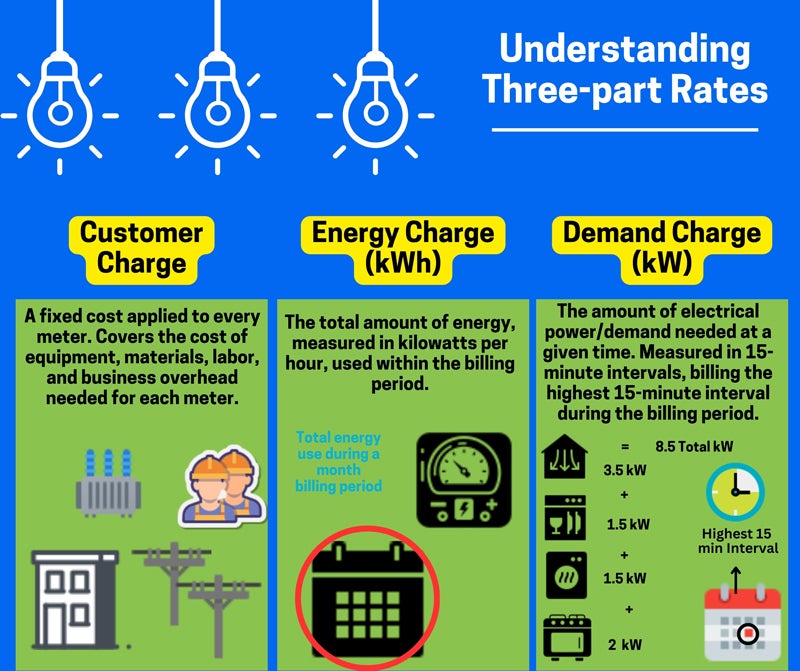
How Can I Save On My Demand Charge?
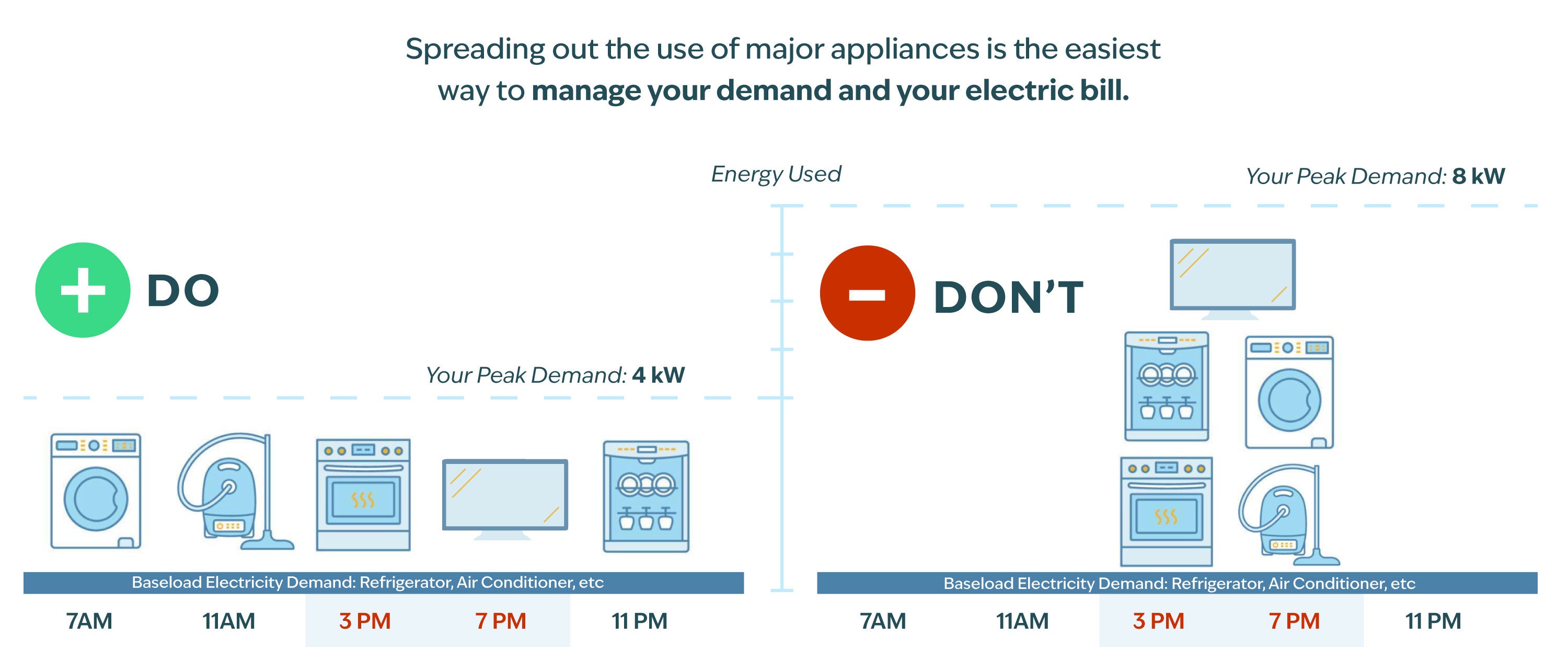
As more appliances and equipment run at the same time, your demand for power increases. Lane-Scott's demand readings are every 15 minutes. Wait 15 minutes after using an appliance to use the next one.
Many devices consume a surge of current from their supply when first turned on, using more demand when initially starting them up. If turning on multilpe devices, spread-out starting them up in 15 minute increments. (Example: Turning on the lights in a shed, and immediatly staring up an air compressor, electric welder, and electric heater all at once).
Our meters measure demand in 15-minute increments. Spreading use out just 15 minutes will reduce your recorded demand.
Using our account management website or app, you can see your demand and energy usage.
Demand reads (kW) are reflected at midnight each day for the previous day's usage.
If your peak demand during that 24-hour period is higher than the previous days, the chart will reflect a new peak.
Find out more about SmartHub HERE and How to View Demand Usage in SmartHub HERE
